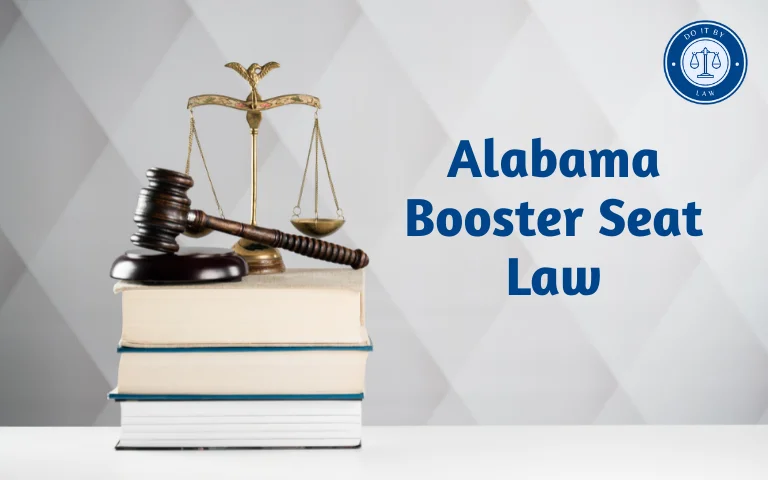Alabama Booster Seat Law: What You Need to Know (2023)
Alabama has laws regulating age, size, and other requirements for children using booster seats and other child passenger safety restraints. Understanding current booster seat statutes in Alabama is important for all parents and guardians driving young children. This guide covers the key provisions, exceptions, penalties, and recent changes to Alabama booster seat law.
When Were Alabama Booster Seat Laws Enacted?
Alabama first enacted its child restraint and booster seat law in 1983. The law has been amended multiple times over the subsequent decades to update age, weight, and height requirements as safety recommendations evolved.
Key law changes include:
- 1983 – Passed initial law requiring approved safety seats for children under age 2.
- 1988 – Extended age to require seats for children under age 5.
- 1994 – Updated to require seats meeting federal safety standards.
- 2009 – Established current age, weight, and height thresholds in line with best practices.
The state periodically adjusts provisions to enhance the protection of children based on research data.
Who Must Use Booster Seats Under Alabama Laws?
Alabama booster seat law currently applies to:
- Children under age 7 weigh between 40 and 80 pounds.
- Children shorter than 57 inches (4’9″) tall regardless of weight.
- All children age 6 or younger regardless of size, based on national recommendations.
Children should remain in booster seats until they reach the maximums for both age/weight and height in Alabama. This ensures optimal crash protection.
Key Provisions of Alabama Booster Seat Laws
The main provisions of Alabama child restraint law related to booster seats under Section 32-5-222 include:
- Children must be properly restrained in a federally approved booster seat or other child restraint system.
- Restraint must conform to the manufacturer’s height and weight limits for the child.
- Must be correctly installed according to guidelines.
- Applies to all vehicles equipped with seat belts.
- Children under 5 cannot ride in the front seat.
- Taxicabs are exempt if no restraint is available.
Booster seats must both fit the child’s size and be properly secured. Backless booster cushions do not comply.
Exceptions and Exemptions to Alabama Booster Seat Law
While comprehensive, Alabama does provide certain exceptions or exemptions from the booster seat law:
- Children over age 7 OR at least 57 inches tall OR over 80 pounds may use a seat belt instead. Only need to meet one threshold.
- Vehicles lacking rear seats or seat belts are exempt. Children may sit in front.
- Parents claiming financial hardship may request an exemption, though these are rarely granted.
- Law enforcement officers transporting children as part of official duties are exempt if necessary.
- Temporary medical exemptions are possible with written proof from a doctor.
Unless an exemption applies, all children falling under the height/weight/age criteria must be in approved booster seats when riding in Alabama vehicles.
Penalties for Violating Alabama Booster Seat Law
Drivers violating Alabama child restraint and booster seat statutes face:
- A $25 fine plus court costs for a first offense.
- A $50 fine plus court costs for a second offense.
- A $100 fine plus court costs for third and subsequent offenses.
No state points are assessed against the driver’s license. However, a violation does constitute a moving violation that insurers may consider when setting rates. Law enforcement typically issues warnings for initial violations if the parent immediately remedies the issue. But repeat offenders receive citations carrying fines.
Recent Changes and Updates to Alabama Booster Seat Law
Recent updates to Alabama booster seat statutes and child restraint system requirements include:
- 2012 (Act 2012-237) – Mandated use of rear-facing seats for infants under 1 year AND 20 pounds.
- 2015 (Act 2015-222) – Required child restraint systems comply with revised federal safety standards.
- 2019 (Act 2019-306) – Extended rear-facing mandate to age 2 (prior threshold was 1 year).
- 2022 (Act 2022-339) – Aligned minimums with newest AAP guidelines recommending rear-facing seats up to age 2 or maximum height/weight allowed by seat.
These changes reflect updates in nationally recommended best practices for safely transporting infants and young children in vehicles.
Controversies and Challenges Related to Alabama Booster Seat Law
While public safety laws, some aspects of Alabama child restraint requirements raise debate:
- Difficulty enforcing correct use of booster seats rather than just age rules.
- Budget constraints limiting booster seat affordability programs or exemption approvals.
- Hesitance by some parents to keep children rear-facing until age 2.
- Limiting the use of front seats for children under 13, not just under 5.
- Police reluctance to issue violations versus simple warnings.
- Need for more booster seat education programs and inspection stations.
- Increasing maximum fines for repeat offenders.
Alabama periodically faces calls to amend provisions that lag national best practice recommendations. But the laws help save young lives.
Conclusion
Alabama booster seat legislation mandates proper child restraint devices tailored to size and age to protect vulnerable motor vehicle passengers. Following the latest laws is critical for ensuring child safety.
Consult the Alabama Law Enforcement Agency’s guidelines and your pediatrician if uncertain about current booster seat requirements. Making children follow Alabama rules can prevent tragedies.







